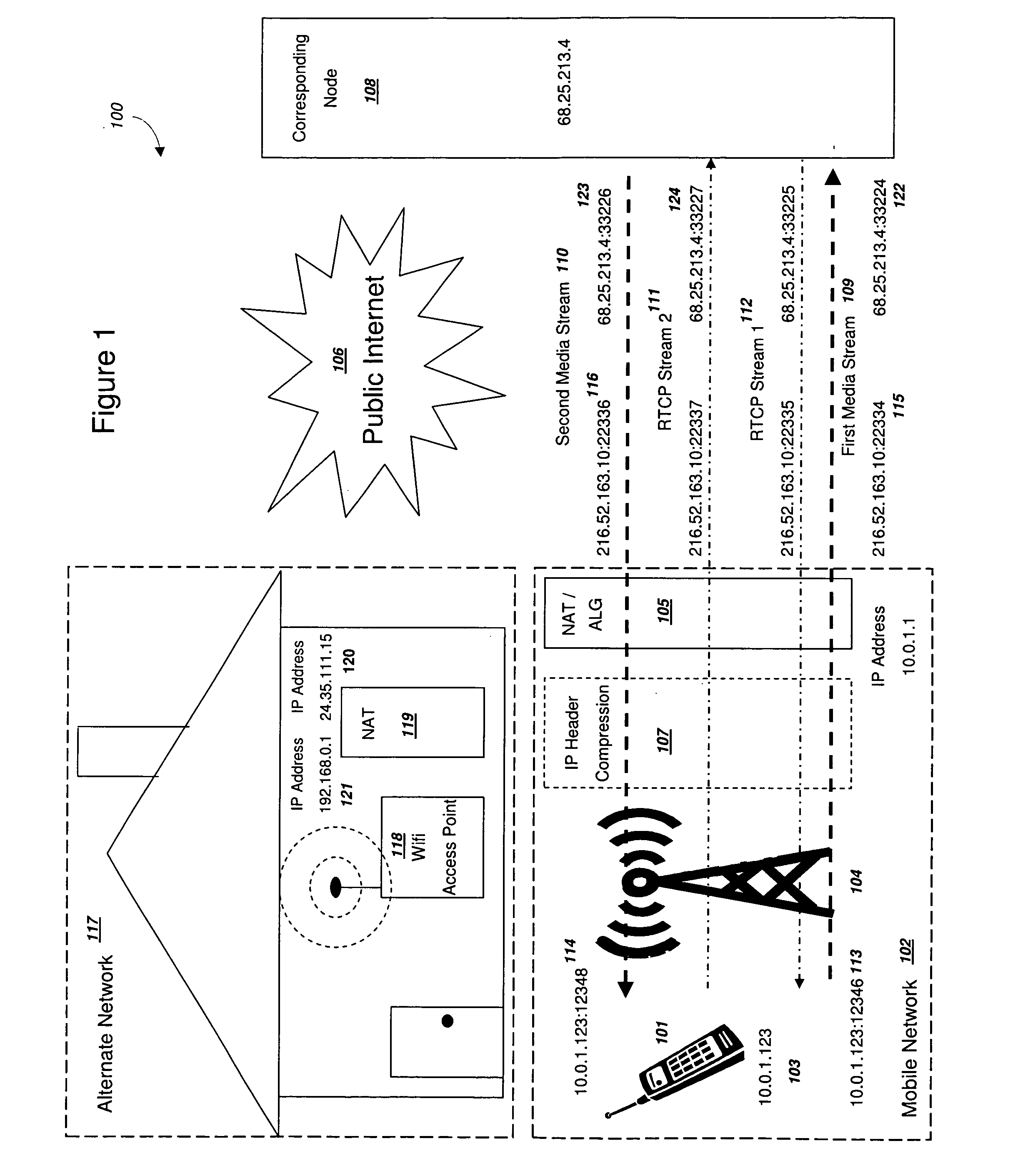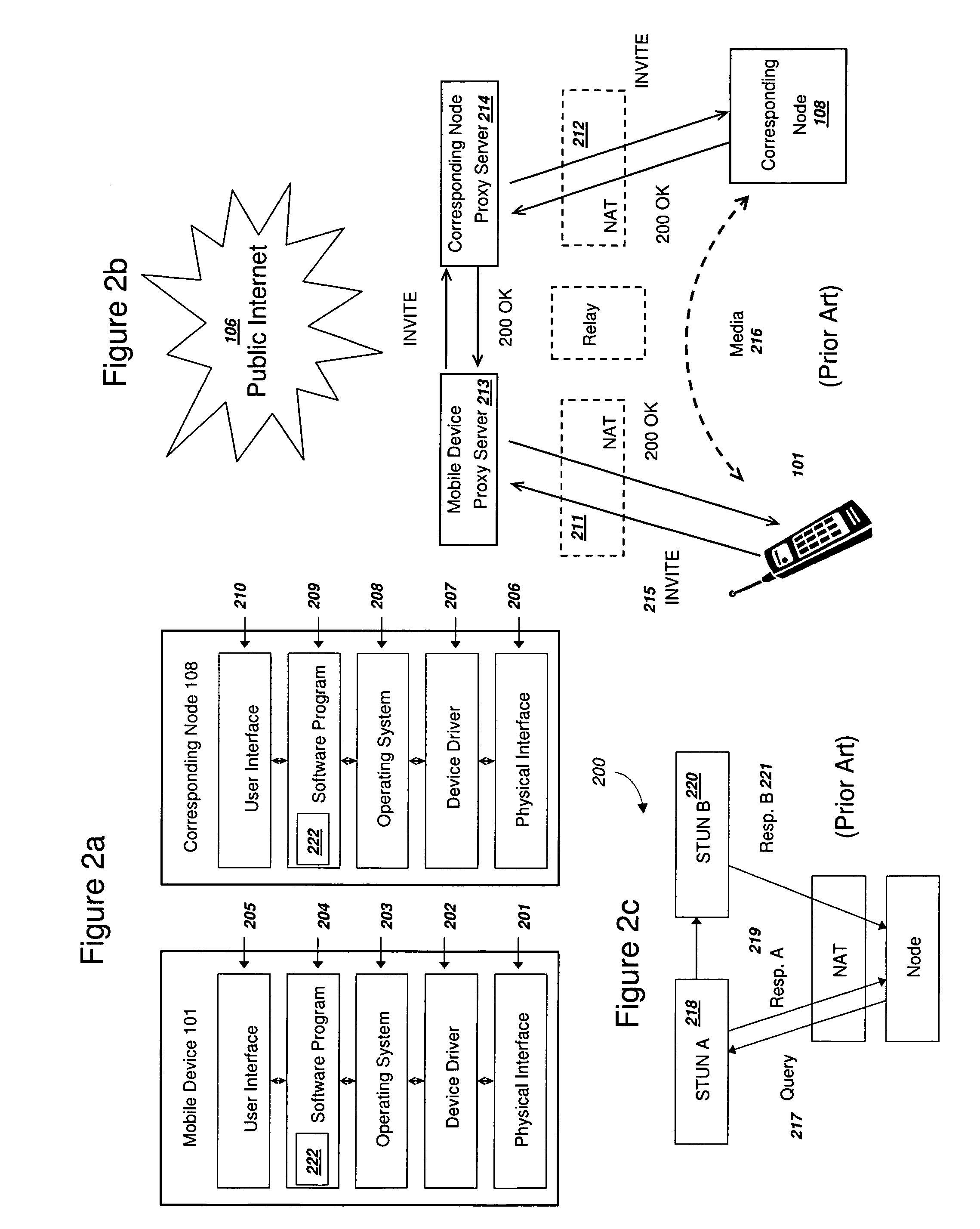Efficient Handover of Media Communications in Heterogeneous IP Networks
a heterogeneous ip network and efficient technology, applied in the field of media communication, can solve the problems of not being able to support the handover of active calls between heterogeneous gsm 2g networks, not being able to control low-level functions of software programs, and not being able to notice gaps or delay in audio for both sides, so as to reduce complexity and increase speed and/or efficiency
- Summary
- Abstract
- Description
- Claims
- Application Information
AI Technical Summary
Benefits of technology
Problems solved by technology
Method used
Image
Examples
Embodiment Construction
[0050]1. FIG. 1
[0051]FIG. 1 is a graphical illustration of an exemplary system, where media is transmitted and received by a mobile device and a corresponding node before handover according to one exemplary embodiment of the invention. The system 100 includes a mobile device (MD) 101 operating within a mobile network (MN) 102. MD 101 preferably is associated with an IP address 103 and can communicate through radio-frequency spectrum and may implement Internet protocols. Although an IPv4 address is shown for MD 101, the MN 102 could implement IPv6, combinations of IPv4 and IPv6, or a similar packet-switched addressing scheme.
[0052]Many methods are available for associating an IP address 103 with MD 101. For example, a particular MAC address assigned to hardware within MD 101 can be temporarily assigned an IP address through methods such as Dynamic Host Configuration Protocol (DHCP) for a wireless local area network (WLAN). Alternatively, MD 101 can be associated with an IP address vi...
PUM
 Login to View More
Login to View More Abstract
Description
Claims
Application Information
 Login to View More
Login to View More - R&D
- Intellectual Property
- Life Sciences
- Materials
- Tech Scout
- Unparalleled Data Quality
- Higher Quality Content
- 60% Fewer Hallucinations
Browse by: Latest US Patents, China's latest patents, Technical Efficacy Thesaurus, Application Domain, Technology Topic, Popular Technical Reports.
© 2025 PatSnap. All rights reserved.Legal|Privacy policy|Modern Slavery Act Transparency Statement|Sitemap|About US| Contact US: help@patsnap.com



